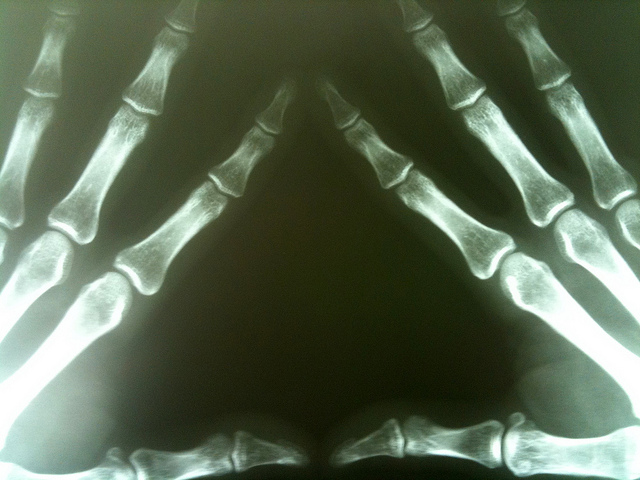Recent state and federal legal changes and initiatives necessitate only that injuries that arise out of the course and scope of employment (AOECOE) be accepted as compensable. While this sounds good in theory, this concept is often difficult to implement, especially in cases involving musculoskeletal disorders or spinal conditions. These cases are often subjective or rely on imaging studies such as MRI scans. While an MRI scan is beneficial for evaluating structural anatomy, MRI scans are so sensitive that they produce false positives in more than 60% of workers' comp cases. A clinician must evaluate the radiological findings and determine if the injury caused the symptoms. Typically, a game of dueling experts develops. The clinicians must rely on the patient to provide an accurate history and give honest effort for range-of-motion and other testing during the physical examination. To establish causation and the reasonableness and necessity of medical treatment, it is crucial to have a well-constructed independent medical exam (IME) that is combined with an Electrodiagnostic Functional Assessment. The EFA objectively evaluates injuries to muscles including the spine by incorporating electromyography to measure myoelectric signals of muscle groups recorded while simultaneously assessing functional capacity at rest and with range of motion and exertion. The EFA can determine the nature, age, acuity and extent of the injury, the precise location of injury and source of referred pain and the significance of disk pathology. The EFA can allow site-specific treatments to be recommended. The following is a case study where the EFA was instrumental in helping establish causation and an accurate diagnosis and thus help to prevent an unnecessary surgery and long-term compensation: Mr. B is a 50-year-old nightshift supervisor in a steel shop in Tulsa, Okla. He is 5 feet 11 inches tall and weighs 299 pounds. On July 31, 2013, while working, he fell five to six feet from a ladder and landed on his right hip and back. He presented himself to an occupational medicine provider shortly after this injury, and the initial diagnosis made by that physician was right hip contusion and lumbar strain. This diagnosis was made even though, as documented on this doctor's examination, there was no visible contusion of the hip at the time the examination was performed. Mr. B's medical history was extensive and complicated. He had documented chronic back pain since a work-related injury that occurred in 1996 while he was employed by a different company. The injury occurred when he was carrying heavy pipe, slipped on a rock and twisted his back. He was diagnosed by an orthopedic surgeon in Tulsa to have degenerative, herniated disks at L4-5 and L5-S1. This surgeon performed a decompression from L4 to the sacrum and instrumented fusion for these degenerative, herniated disks in 1996. Mr. B underwent a second operation in 1997 for hardware removal and fusion exploration by the same orthopedist. Since that time, up until the present, Mr. B had complained of on and off back pain to several different doctors. In 1999, he was seen by another orthopedist in Tulsa because he was complaining of back and right hip and leg pain. He had an MRI scan done at that time that showed a bulging disk at L3-4 with degenerative changes of his facets at that level. Later in 1999, under the direction of this new orthopedist, he had a myelogram/CT scan that showed a solid fusion from L4 to the sacrum and again showed minor degenerative changes with bulging disks and facet hypertrophy at L3-4. The new doctor did not recommend any surgical intervention; however, Mr. B continued to complain of back and leg pain from July 2004 until June 2012. During that period, he saw a primary care physician and a pain specialist and received numerous different pain medications to help control his back pain; these included MS Contin, Lidoderm patches, Lyrica, Soma and oxycodone. Between April and June of 2013, just before his alleged injury at the steel shop on July 31, Mr. B saw yet another physician who prescribed him Kadian 40 mg twice a day and Lortab 5 mg p.r.n. for breakthrough pain. Again, these medications were prescribed for a primary diagnosis of back pain. Nevertheless, Mr. B's history said his new back pain was a result of a single-event injury that occurred on July 31 as opposed to an exacerbation of a pre-existing condition. He saw yet another orthopedic surgeon. This orthopedist recommended physical therapy and epidural steroid injections. The patient failed to improve, and an MRI scan of the lumbosacral spine was ordered. The scan showed the patient to have a bulging disk at L3-4 and significant hypertrophy of the facets with osteophytes at L3-4. As a result, the orthopedic surgeon diagnosed a degenerative, herniated disk, facet hypertrophy, and instability at L3-4 above the patient's old fusion from L4 to the sacrum. The orthopedist felt that the major cause of this new injury to the patient's back was the fall that occurred on July 31, 2013. As a result, this doctor recommended an L3-4 decompression and instrumented fusion as a medically necessary treatment. Mr. B was then sent to a neurosurgeon for an IME and an EFA on March 12, 2014. Again, at that time, Mr. B complained of bilateral low back pain radiating into the right hip and to the calf. He also complained of pain in his bilateral quadriceps, lateral aspect of his leg with numbness that radiated down the right leg posterolaterally into the back of the foot in a sciatic nerve distribution. The patient filled out a visual analog scale pain diagram and rated his pain at 10/10. stating that he was unable to work and also was unable to do several of the maneuvers during the physical examination performed by the neurosurgeon. On the same day as his IME examination, he had an EFA. The patient stated he was unable to complete the lifting portion of the EFA because of his severe pain. The EFA revealed appropriate rest-sitting readings and minimal positional changes that decreased with movement, indicating that they were not clinically significant and that the patient was exaggerating the pain. The EFA revealed chronic bilateral pathology that was not consistent with the date or mechanism of injury or Mr. B's present subjective complaints. During the functional capacity portion of the EFA, Mr. B refused to lift the bar or do the full range-of-motion testing. He also was noncompliant during the IME physician's physical examination. He displayed several Waddell signs and did not give full effort for different parts of the examination, such as range-of-motion testing of his back. Therefore, both the EFA findings and the IME findings were consistent, demonstrating patient's lack of effort, noncompliance and exaggeration of symptoms and pain. The EFA was able to provide objective evidence that helped to quantify the age of the injury and the patient's compliance. The EFA, along with an MRI scan of the lumbar spine, the IME physician's examination and review of all reports and records on Mr. B allowed the IME physician to conclude that the patient had not suffered any new injury related to the fall that occurred on July 31, 2013. It was the IME physician's opinion that Mr. B had a chronic back problem. In addition, the EFA helped the IME physician to conclude that another surgery on Mr. B involving an L3-4 decompression and fusion was not reasonable, nor was it a medically necessary treatment. The EFA significantly helped the IME physician to establish that the major cause of this patient's symptoms was chronic, not acute, and to make accurate treatment recommendations. Even after the objective IME and EFA evaluations, Mr. B's treating orthopedic surgeon insisted on performing an L3-4 decompression and instrumented fusion. Mr. B's treating orthopedic surgeon felt that he had an L4 radiculopathy caused by the fall on July 31, 2013, even though this patient filled out a visual analog scale pain diagram for the IME neurosurgeon that showed the pain to be near the tailbone and radiating down the leg in an S1 distribution that did not coincide with an L4 radiculopathy. Also, there were no findings on the EFA examination to suggest this patient had an L4 radiculopathy. Because there was a difference of opinion between the treating orthopedic surgeon and the IME neurosurgeon, legal proceedings ensued. The IME/EFA proved substantive evidence in court. The Workers' Compensation Court of Oklahoma found that additional surgery and medical care for Mr. B was denied. His complaints were felt to be because of a longstanding condition and not the result of the single-event injury that occurred on July 31, 2013. This case demonstrates that the EFA is considered a valid test by the workers' compensation court system. This case demonstrates that, in workers' compensation cases where there are conflicting opinions, there is a need for valid, specific and objective medical evidence that can be provided by the EFA so that AOECOE issues can be adequately addressed and resolved. In addition, the EFA can be instrumental to make site-specific diagnoses and treatment recommendations so that inappropriate treatments and unnecessary surgery are avoided. The author invites you to join him at the NexGen Workers' Compensation Summit 2015, to be held Jan. 13 in Carlsbad, CA. The conference, hosted by Emerge Diagnostics, is dedicated to past lessons from, the current status of and the future for workers' compensation. The conference is an opportunity for companies to network and learn, as well as contribute personal experience to the general knowledge base for workers' compensation. Six CEU credits are offered. For more information, click here.
Objective Evidence for Determining AOECOE
This case study shows how to settle "course of employment" questions on injuries once and for all.







